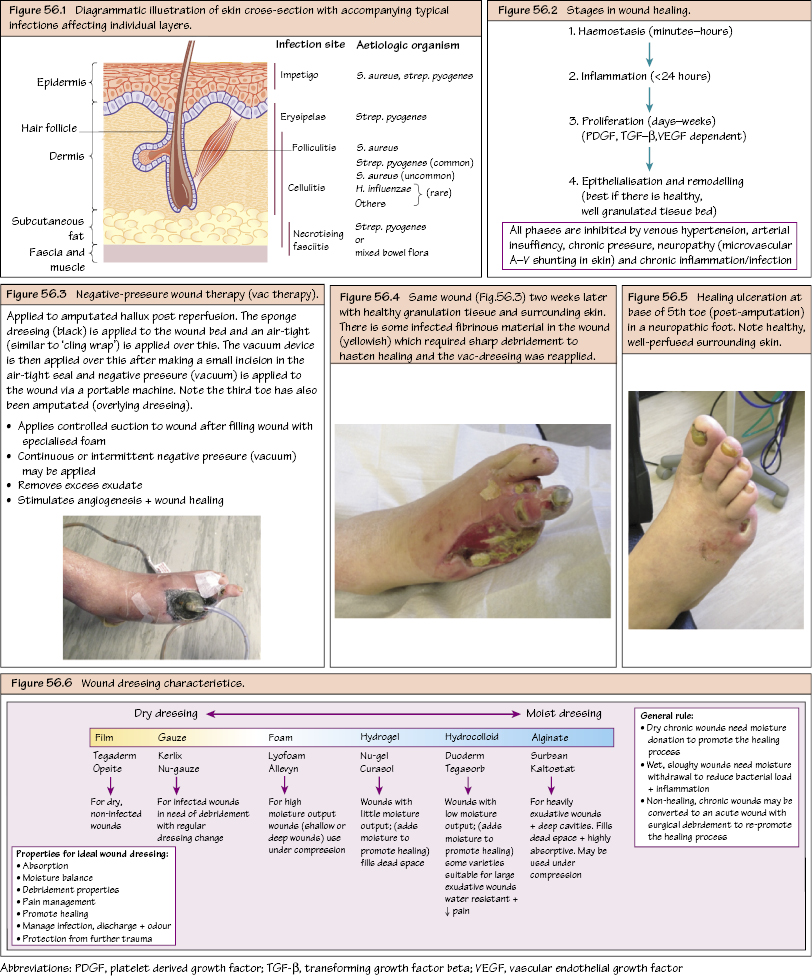General Wound Care Although all open wounds will have bacteria present, they may not need treatment unless infection becomes established. Infection of an ulcer should be strongly considered in any wound that fails to heal or deteriorates despite adequate care. This is the presence of non-replicating organisms in a wound. All chronic wounds are contaminated (usually indigenous bacteria or from the environment), but the majority of contaminating organisms are unable to replicate in a wound (e.g. from soil). This is the presence of replicating organisms inhabiting a wound in the absence of injury to the host. Most of these are from the normal skin flora (e.g. staph epidermidis, other coagulase negative organisms, corynebacterium sp). This is the presence of replicating organisms within a wound causing injury to the host (e.g. Staph. Aureus, haemolytic strep [S. Pyogenes, S. Agalactiae], E. Coli, Proteus, klebsiella, anaerobes, pseudomonas, acinetobacter). The microbiology of a wound will change over time! The primary bacteria are normal skin flora (Staph. Aureus, β-haemolytic strep).

Important Wound Concepts
Definitions
Wound Contamination
Wound Colonisation
Wound Infection
Evolving Microbiology of a Wound
Early Acute Wound
Stay updated, free articles. Join our Telegram channel

Full access? Get Clinical Tree


